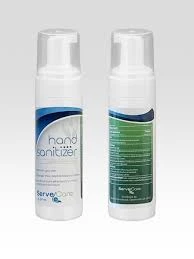Polyaluminium Chloride Solution - Uses, Properties, and Benefits
Polyaluminium chloride (PAC) is a widely used coagulant in water treatment processes. An inorganic polymer, PAC is composed of aluminum hydroxide polymers and is commonly available in various forms, including solid and liquid solutions. This compound plays a crucial role in the purification of drinking water, wastewater treatment, and industrial applications due to its efficient coagulation properties.
One of the most significant advantages of using polyaluminium chloride solution is its high effectiveness in removing suspended particles, colloids, and organic matter from water. When added to water, PAC undergoes hydrolysis, forming aluminum hydroxide, which binds with impurities and aggregates them into larger particles, or flocs. These flocs are then easily removed through sedimentation or filtration. This process makes PAC particularly beneficial in treating turbid waters, where the reduction of suspended solids is essential for ensuring water clarity and safety.
In addition to its flocculation ability, polyaluminium chloride exhibits lower optimal dosing requirements compared to traditional coagulants such as aluminum sulfate. This means that smaller quantities of PAC can achieve the same or better results, leading to cost savings for water treatment facilities. Furthermore, the by-products generated from PAC treatment are generally less sludge, making the disposal process simpler and more environmentally friendly.
polyaluminium chloride solution

Another notable feature of polyaluminium chloride is its versatility. The solution can be used for a wide range of pH conditions, allowing it to be effective in both acidic and alkaline waters. This adaptability makes PAC a preferred choice for various applications, including municipal drinking water treatment, industrial effluent treatment, and even in industries like paper manufacturing and food processing.
However, it is crucial to handle PAC solutions with care due to their acidic nature. Proper safety measures should be implemented during storage and application to prevent potential health risks, including skin and eye irritation. Moreover, water treatment facilities must regularly monitor water quality parameters to optimize PAC dosage, ensuring that the water remains safe for consumption post-treatment.
In conclusion, polyaluminium chloride solution stands out as a vital agent in the field of water treatment. Its exceptional coagulant properties, cost-effectiveness, and versatility make it indispensable in producing clean, safe water. As environmental regulations become stricter, the demand for efficient and sustainable treatment solutions like PAC is likely to increase, further solidifying its role in modern water management practices. Ultimately, the use of polyaluminium chloride contributes to public health and environmental protection by enhancing the quality of water supplied to communities.
-
Understanding Polycarboxylic Acids: Properties, Applications, and Future PotentialNewsJul.28,2025
-
Scale Inhibitor Explained: How to Protect Your System from Limescale and Hard Water DamageNewsJul.28,2025
-
Scale and Corrosion Inhibitors: Essential Chemicals for Industrial Water System ProtectionNewsJul.28,2025
-
Polyaspartic Acid: A Biodegradable Polymer for Sustainable ChemistryNewsJul.28,2025
-
Isothiazolinones: A Versatile Antimicrobial Class with Industrial Power and Regulatory ChallengesNewsJul.28,2025
-
A Deep Dive into 2-Phosphonobutane-1,2,4-Tricarboxylic Acid (PBTC)NewsJul.28,2025





